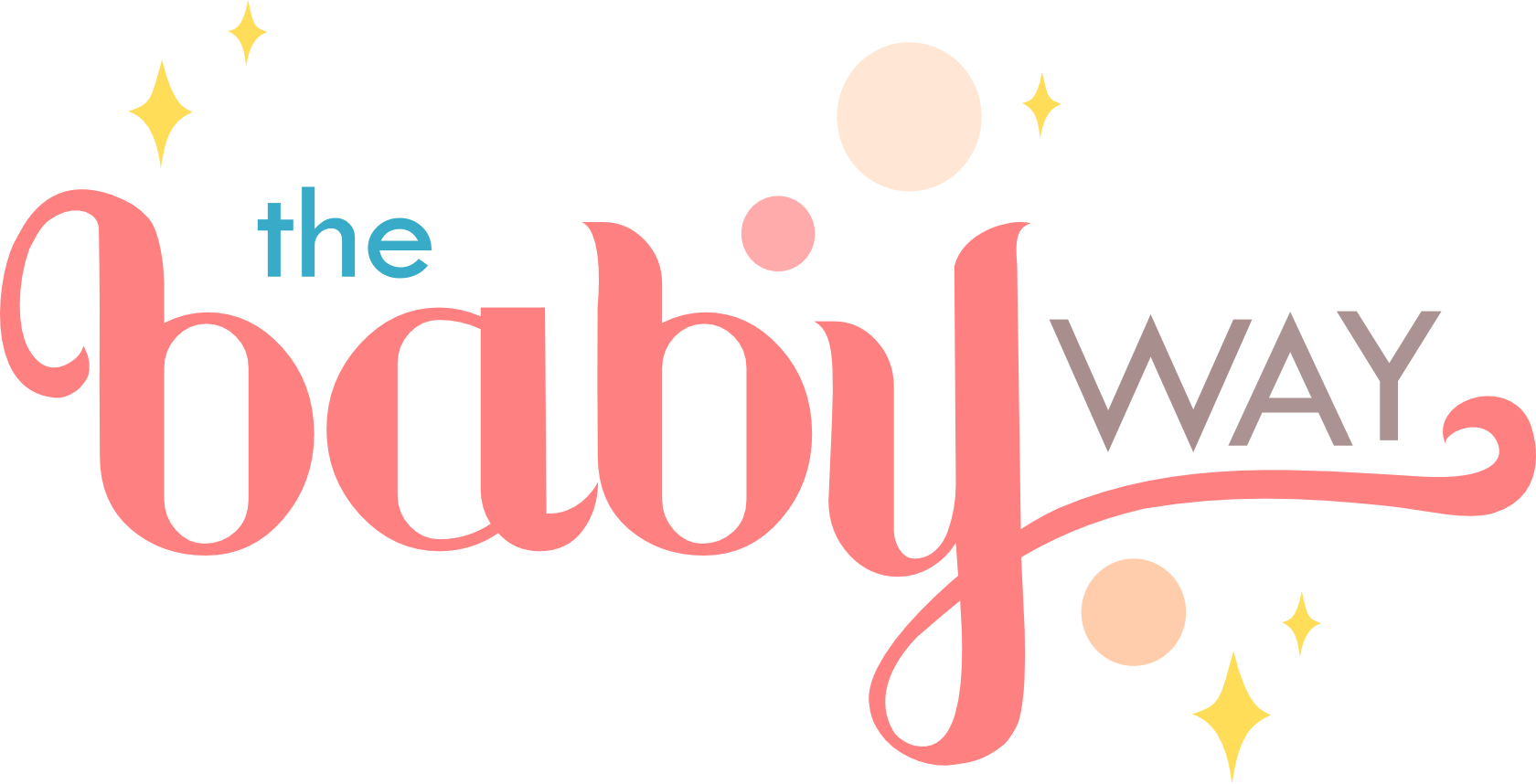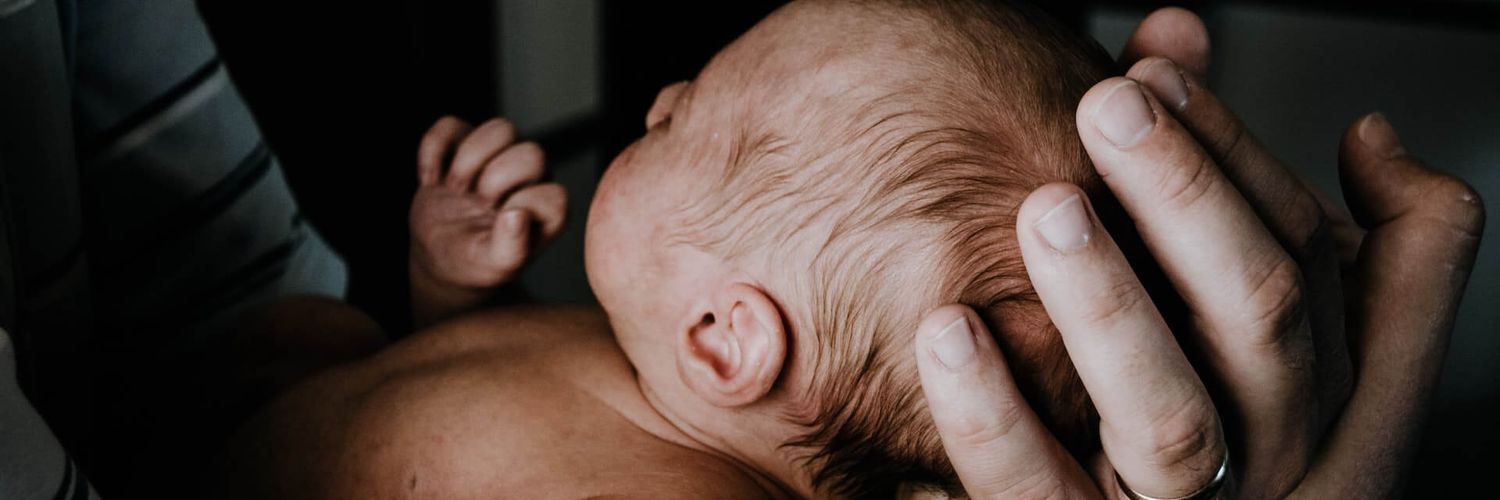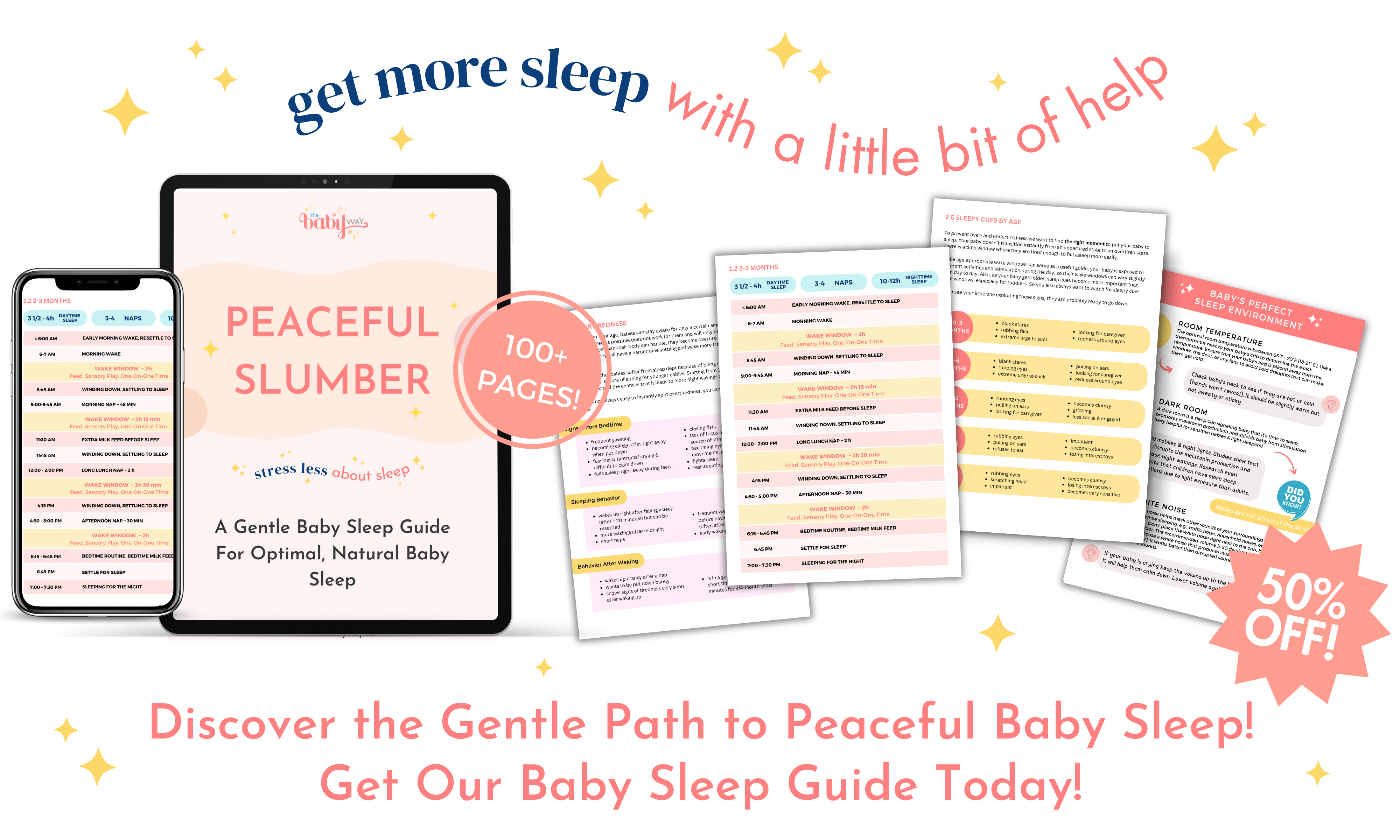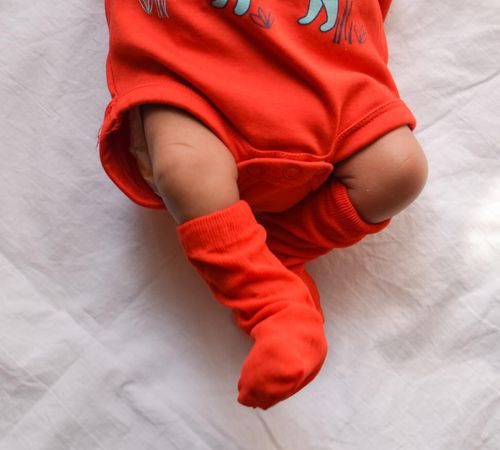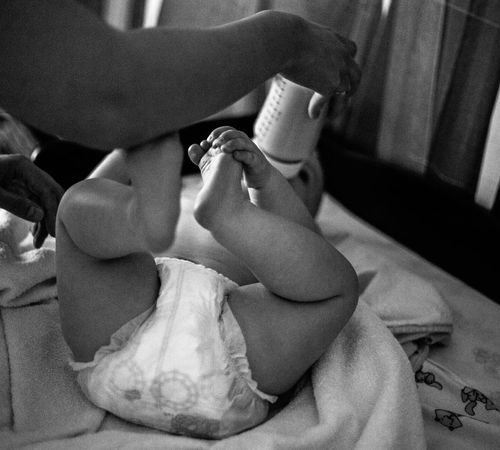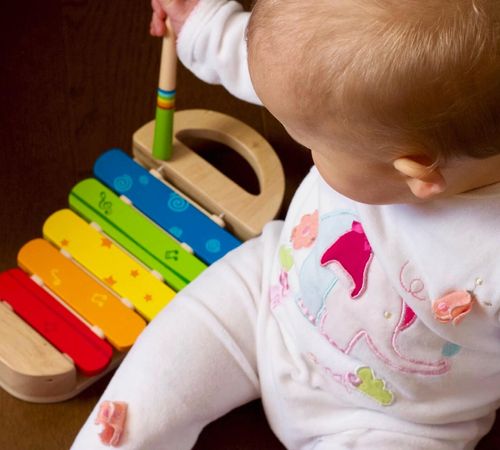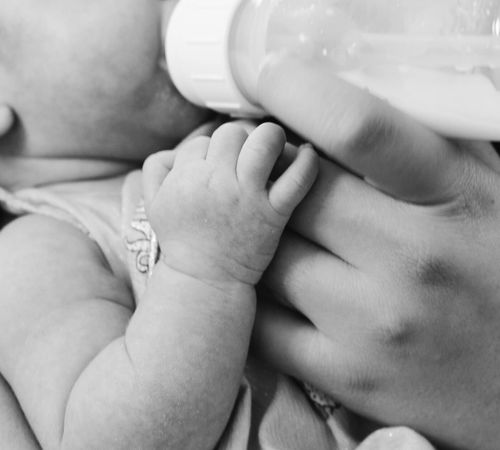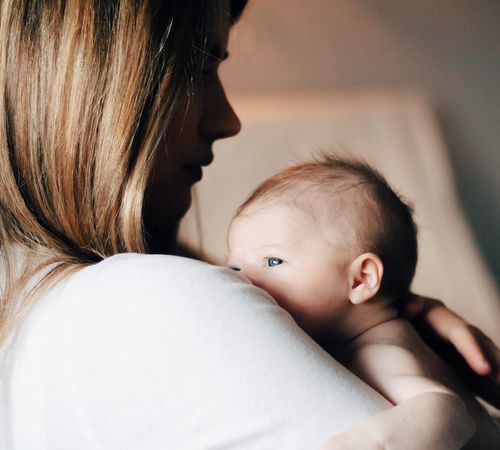This is probably the most common questions parents have: Can I sleep train my baby without using a cry-it-out method? But the truth is that there are ways to improve your baby's sleep without the need to let them cry. Let's explore all the alternatives to classic sleep training and discover if they really work!
Hearing a baby cry is just such a trigger.
Not only because our generation of parents are probably sensitive to crying since we were all taught that crying is bad and we should “just stop crying” as little children.
No, also because baby's cries actually activates certain regions in our brain that are responsible for nothing other than pure anxiety. Cool, huh?
It's a great thing that we parents have such an urge to respond to baby's cries because crying is for a long time the only way of communication for those little beings.
And then there comes baby sleep training.
Many sleep training methods include crying. So now you are at kind of a dilemma. On the one hand you fear you need to teach your baby how to sleep. On the other hand every inch of your body wrenches when you hear those little sirens go off.
So what are you going to do?
Well, I for myself am not a big believer in any cry-it-out methods whether they are controlled crying or hardcore FERBER. It just never felt right for me and I couldn't let my babies cry. Yet I was able to improve their sleep with gentle techniques that I want to show you.
In this article, we will find out if sleep training without crying it out can work and explore the alternative baby sleep methods that will help your baby sleep better.
This article covers:
1. What Is Sleep Training?
There is no official definition of sleep training. It means a lot of different things for a lot of different people. Some people consider sleep training any attempt to influence baby's sleep. For others sleep training only comprises methods that involve letting your baby cry it out.
In general, sleep training is a term used to describe a set of methods and techniques used to help infants and young children learn to fall asleep and stay asleep through the night.
For me personally, sleep training is everything that includes all the methods that tell you not to respond to your baby. And CIO counts as that.
I have written another article about what will happen when you don't sleep train. Doomsday of course..no just kidding. But check out the article if you want to find it out!
2. Do I Need To Sleep Train?
No, you don't need to sleep train. Sleep is not a skill that you have to teach. Babies know very well how to sleep. Your child will sleep eventually even if you don't move a single finger.
And self-soothing is a skill that you develop over time. Not at 6 months and not at 24 months (go ahead and ask my toddler). It's a skill that you develop through many years of childhood by having your needs met. And not by leaving you to cry alone in the dark.
Though love doesn't work with little people.
The reason why so many parents think they might need to sleep train is because it's advertised to them by sleep consultants. Combine this with short parental leave, postpartum, no family to help you out and total sleep deprivation, then you got the perfect anxious parent thinking their baby will never sleep unless they leave them to cry.
Please don't get me wrong. Sleep deprivation is tough. Lack of sleep will do all kinds of things to you starting from mood swings to anxiety. I just want you to know that there are very well other gentle ways to improve your baby's sleep and that you do not need to let your little one cry.
3. Taking A Holistic View At Baby's Environment
To improve your baby's sleep you first have to take a look at the complete family picture and understand how baby sleep actually works. There are many factors that can influence your baby's way of sleep. If you tweak some things here and there you might be able to improve your baby's sleep already.
Before we dive into more specific methods, let's take a closer look at all the different factors that may have an effect on your baby's sleep:
Sleeping Arrangement
The sleeping arrangement is a very personal family matter. But sometimes we are afraid to try out something new.
The truth is that some babies sleep better in a crib, others when they co-sleep with their parents. A separate room might be a good solution for noisy sleepers (parents or baby). Co-sleeping might be the right choice for breastfed babies or sensitive babies.
We sometimes think there is only one right way to sleep for a baby, but there are many safe ways for a baby to sleep. Floor beds, co-sleeping, matress next to the crib. There are a lot of different options
If you think your current situation might contribute to sleepless nights then try something different. Just make sure to follow all safe sleep guidelines.
Cortisol
Its also important to understand the influence of cortisol on a baby's sleep. Whenever your baby is awake their cortisol levels slowly rise. When cortisol levels get high babies need to nap in order to lower those cortisol levels again.
If your baby stays awake for longer than their body can handle then their cortisol levels will peak. In other words, your baby is now overtired. They will now have trouble falling and staying asleep because of those high cortisol levels.
That is why it's important to learn about early tired signs. They are a big step towards better baby sleep and will help you put down your baby to bed at the right time.
Sleep Environment
Not only the sleeping arrangement is important but the whole sleep environment can influence your baby's sleep.
You need to create a sleep-inducing environment so your baby has an easier time falling and staying asleep. White noise, black-out curtains and a sleep sack are core elements to create the best sleep environment for your baby.

Your Behavior When It Comes to Sleep
I know how triggering the whole subject of baby sleep can be. Sometimes it is all you can think about and focus on.
But it is important to remind yourself that your baby is more than that and your parenting is not reflected in your baby's sleeping behavior.
However, sometimes we are already stressed when we know bedtime is approaching. The drawback is that babies are extremely sensitive to stress and pick up on their parents' stress immediately. Your baby will be stressed when you are stressed.
That is why it's important to try to take your mind of the whole sleep thing. Don't start your bedtime already thinking about how many times your baby will wake up this time.
Try to control your thoughts and hold those negative ones in check. Use affirmations and mantras to get your though those tough times.
Baby's Temperament
I truly don't know why this still gets overlooked so much. Temperament plays a huge role when it comes to sleep, yet it is often not considered.
My own kids are the best example on how much temperament influences sleep. For example, daughter slept in her own room starting at the age of 15 months. This was something we couldn't even think about with my boy. I knew this would never work so we delayed the whole process of moving him to his own room.
You always need to use methods that fit your baby's temperament and personality. Every baby is unique and only because one thing works for one baby it doesn't mean it will work for another one, even when they are siblings.
Don't try to force methods or sleeping arrangements on your that are not working. Instead work with your baby's personality and find solutions tailored to their individual needs.
Understanding Baby Sleep Patterns & Adjusting Your Expectations
It's important to understand that baby sleep patterns differ greatly from us adults. You cannot expect your baby to sleep like you would (if you could). They are not tailored that way.
Baby sleep is designed by nature for specific reasons. Night wakings out of hunger and as a protective measure are only two very good reasons why your baby wakes so frequently at night.
It is important that we adjust our expectations and stop following unrealistic social standard that at some point have been set up randomly. We need to understand that infant sleep is also never linear and that we will have our ups and downs.
Research shows that parents who adjust their expectations towards their baby can cope way better with sleep deprivation and sleep loss. That is why it's important that we do not get sucked into the bubble of wanting a perfectly sleeping baby.
4. Alternative Methods To Improve Baby's Sleep
There are methods you can try to improve your baby's sleep without letting them cry it out alone. But before we get to those methods I want to mention two other things.
The first one is that some sleep experts sell their method as a gentle sleep training method or no cry sleep training but once you start you will notice that they do use controlled crying. Therefore it is always a good idea to first get yourself familiar with their sleep philosphy.
If a sleep consultant tells you to not look into your baby's eyes you better run!
The other thing is that we need to understand that crying per se is not something bad. All babies cry. You and I know better than anyone else. The problem with conventional infant sleep training is that babies are left alone to cry.
So weaning your baby from feeding to sleep and having them protest is not the same as leaving them in the dark room alone.
Wake-To-Sleep
The Wake-to-sleep method is a very effective method to help your baby connect sleep cycles. It's perfect for lengthening your baby's short naps.
You can find out how this method works and how it is implemented in my article below:
The Pick-Up, Put-Down Method
The pick-up, put-down method is also a wildely known method to get your baby used to falling asleep in the crib. You basically put your baby down into the crib and when they start crying you pick them up again. Once they are calm you try placing them back in the crib.
You are supposed to repeat this method until your baby gets used to falling asleep in the crib at the beginning of nap and bedtime.
With this method I always advice parents not to try longer than for 20-30 minutes because then the stress really gets to you. It can be more time consuming and requires a lot of patience from the parent. But if you practise this you baby will get used to falling asleep in the crib more and more.
Drowsy But Awake
This is not the usual drowsy but awake method that we know from many sleep consultants. This techniques is rather used for crib transfers if you have a baby that will only sleep in your arms.
For this method, you will help your baby fall asleep as usual but once you notice that they are really drowsy, even almost asleep you will place them into the crib and continue to settle there.
This method takes time and practise but your baby will also get used to falling asleep in the crib.
Practice Crib Naps
By practising crib naps your baby will also get used to sleeping in the crib. I always suggest to start with the morning nap as sleep pressure is still high and your baby will fall asleep more easily in the morning.
In order to get used to sleeping in the crib, your baby doesn't have to nap there all the time. One nap a day will already have a great effect.
Replacing Active Sleep Associations With Passive Sleep Associations
Active sleep associations are those that include a parent while passive sleep associations are for example a dark room or white noise.
In order to slowly transition to independent sleep, you can remove those active sleep associations with passive sleep sleep associations.
For example you can go from feeding to sleep to rocking to sleep to patting to sleep to shushing to sleep. As you can see you gradually remove your help but don't make big jumps but rather small steps.
If you are interested in slowly pacing out active sleep associations take a loot at my sleep program where we gently wean babies from feeding and rocking to sleep.
5. Can Sleep Training Without A Cry It Out Method Really Work?
It's important to remember that conventional sleep training also doesn't work with all babies. For example for highly sensitive babies CIO methods will probably never work. The same goes for gentle techniques. So it really depends on your baby.
Sometimes it will take longer to see results but with every day you are making progress. So in the long run gentle methods are just as effective as CIO methods.
It all comes down to a healthy sleep hygiene that in all honesty even we as adults should practise (but most of us don't (scrolling your phone before to sleep?).
6. FAQ
1. How long does it typically take to see results with alternative sleep training methods?
Results can vary depending on the baby and the sleep training method being used. Some babies may show improvement within a few days, while others may take several weeks or even months to fully adjust to a new sleep routine.
2. Can these gentle methods be used for toddlers as well?
Yes, all these methods can be used for babies and toddlers. Since toddlers can communicate more and are more easily distracted it can be easier to guide them to independent sleep (even if they have a louder voice). They understand more of what is happening and what you are saying. I would say that toddlers adjust even better than young babies.
3. Are there any risks to not sleep training your baby?
There are no risks to not sleep training your baby. Your child will eventually sleep on their own at some point. The only thing you want to establish healthy sleep habits which include winding down, no screen time, reading a book, etc.
